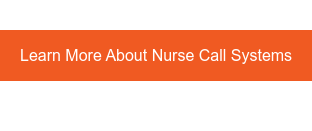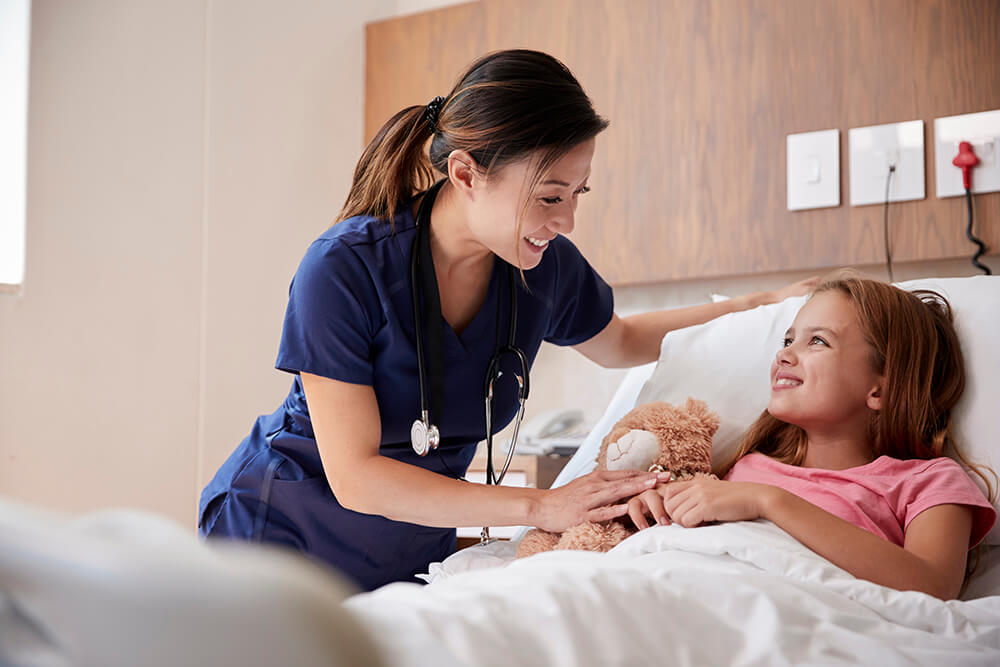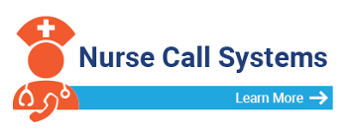In recent years, the technology driving nurse call systems has evolved. It continues to progress into a world of digital and networked IP-based systems that have helped improve patient care in many hospitals, long-term care facilities, and other healthcare facilities. Specialized options designed to handle patient requests make these systems increasingly easy to use. While code-required functionality has not changed over the past several years, nurse call systems continue to expand their capabilities. These systems now go beyond life safety provisions.
Targeting improvements in patient satisfaction, staff communications, and operational efficiencies, features that used to be considered optional are now standard.
Today’s nurse call systems feature:
With all these new features and integrations, each system within a healthcare facility can collect valuable data. With that data, facilities can create solutions that interpret information and drive capabilities across a healthcare organization’s enterprise. Overall, this can improve patient care, satisfaction, and efficiency.
Nurse Call System Innovations
Today’s nurse call systems are IP-based with session initiation protocol (SIP) and voice over Internet protocol (VoIP) for audio communications. The IP infrastructure allows hospitals and other healthcare facilities to use off-the-shelf structured cabling. This reduces installation time, enables faster troubleshooting, and sometimes allows facility personnel to perform their own maintenance.
New systems also interact with hospital departments by using intelligent devices in the patient rooms and charting areas. With this feature, staff can deploy personnel to a specific patient with clear instructions. Everything now relies on sophisticated computer hard drives, networks, servers, and programs. Metal cabinets that used to take up space and simple switches with basic on and off buttons are traded in for endless opportunities to integrate information and notification solutions both within the facility and campus-wide.

Nurse call solutions are becoming more intuitive and easy to use. Patients can now ‘talk’ from the pillow speaker to their care team through wearable badges and smartphones. This can improve the patient’s experience and translate into improved HCAHPS scores.
Current applications give facility employees more tools than ever, including the ability to:
These systems also include a status board application, which staff can view on any facility PC. The status board, often displayed on a large flat-screen monitor near the nurse’s station, shares the status of the bed, patient information, and location information. This way, floor staff and unit clerks can ascertain the location of peers and the safety of the patient’s environment.
How to Integrate Nurse Call Systems Into Your Facility
The key for this technology to evolve and link up with RTLS is to integrate nurse call systems with other data and communication systems. The nurse call solution must include both workflow and staff assignment capabilities. Integrating these systems with SIP telephony and secure messaging systems is also very important. This type of integration continues to evolve from the handbell bedside ringing to pocket pagers. However, today’s integration is with facility information systems (FIS), telemetry equipment, and smartphones. RTLS integration is almost a necessity in new installations. The integration of nurse call systems currently with EHR providers is the biggest current development.
Experts say that to enhance the efficiency of notifications, the latest nurse call systems for hospitals and acute care facilities can gather information and connect to a number of places, including:
More mobility platforms and alarm management systems are leveraging the staff assignment modules in nurse call systems to identify where to route important alerts and alarms. In some environments, calls may be canceled remotely. SIP wireless phone integration is a very popular trend in this area. SIP allows routing patient calls directly to their assigned caregiver’s wireless phone.
With the medical community moving to electronic health records, integration with other data and communication systems is crucial. When installing new systems, hospitals and other healthcare facilities almost always request integration with their new or existing communication systems to share data and have a single point of entry. If you think integrated nurse call systems might be a fit for your facility, schedule a complimentary consultation with us to learn more.
System Interfacing With Mobile Phones
As clinicians become more mobile, the desire to connect nurse call systems to handheld communications rises. It allows nurses, doctors, and caregivers to spend more time with their patients wherever they are. Some nurse call systems have the ability to send calls and alerts to a caregiver’s wireless phone. This could be especially useful for acute care facilities where quick and easy communication is crucial.
For example, if a patient or resident places a call, that call can be directly routed to his or her assigned caregiver. From there, the caregiver can accept the call, speak to the individual, or reject the call and have the escalation procedures automatically route the call to the next person in the queue.
How do nurse call system vendors take this to the next level? User-friendly systems. We know that certain patients and residents are inclined to avoid the nurse-assist button — similar to pressing a flight attendant call button on an airplane. The more user-friendly this interface can become, the better the patient satisfaction scores. Currently, some manufactures are working on a videoconferencing feature via the patient television screen for caregivers to respond quickly and have face-to-face interaction without entering the patient room. This will aim to make the transition to a technologically advanced facility easier, especially for those in long-term care facilities and continuing care retirement communities.
Purchasing a Nurse Call System
Healthcare facility professionals must deal with various purchasing and training considerations when selecting and installing nurse call systems. Consolidation is everywhere in healthcare and as facilities consolidate, they have a greater interest in standardization on such clinical systems as nurse call solutions. We work with centralized purchasing far more today than we did in the past in South Carolina and in the surrounding areas we service in the Southeast.
When purchasing a nurse call solution, a professional must make sure there is both a clinical champion and an IT champion on board early in the design phase. Having the right infrastructure in place is important, but process change and design associated with the new technology are equally important. The call system should enhance workflow, not slow it down.
There are more possibilities of remote troubleshooting and even fixing certain problems today, which makes self-maintenance attractive to facilities managers. At the same time, this can add more responsibility to an already over-taxed department. As the systems become more IP-focused, ownership within the facility seems to be shifting to IT and telecom groups. Because there is so much integration, more departments are called upon to assist in the pre-purchase, installation, training, and maintenance of the integrated communications solution. Contact us to request a quote or to ask any questions.
Evolving Regulations In Assisted Living
The regulatory landscape is also evolving, especially in assisted living, and standards have been updated to cover wireless devices. These changes affect the Southeastern regions we service and beyond.
The regulatory environment for nurse call has changed a great deal in recent years. For example, some manufacturers providing more advanced integrations are now treated as medical device suppliers by the Food and Drug Administration (FDA). While this does not impact smaller manufacturers, it forces larger suppliers to register their products and comply with the quality process requirements of the FDA.
New standards developed by Underwriters Laboratories (UL) and manufacturers provide a minimum level of performance in assisted living residences, which currently have no regulatory requirements. UL 2560, Emergency Call Systems for Assisted Living and Independent Living Facilities, was developed for this market. Introduced in 2011, the UL 2560 standard was driven by industry to address special communication challenges outside the hospital.
The newest priority in senior housing is being able to locate residents when they call for help from outside their residence. Technology solutions currently available require the addition of receivers to pinpoint the location. Unfortunately, this can be costly depending on the system, its ability, and the need of the facility.
The UL 1069 and UL 2560 standards now cover wireless devices for various components of nurse call systems. A wireless system is attractive for any retrofit application or any facility that expects to repurpose spaces. HIPAA compliance is another sensitive regulatory issue with respect to nurse call systems. This issue will continue to grow as more medical systems venture out into the public and into smartphones.

